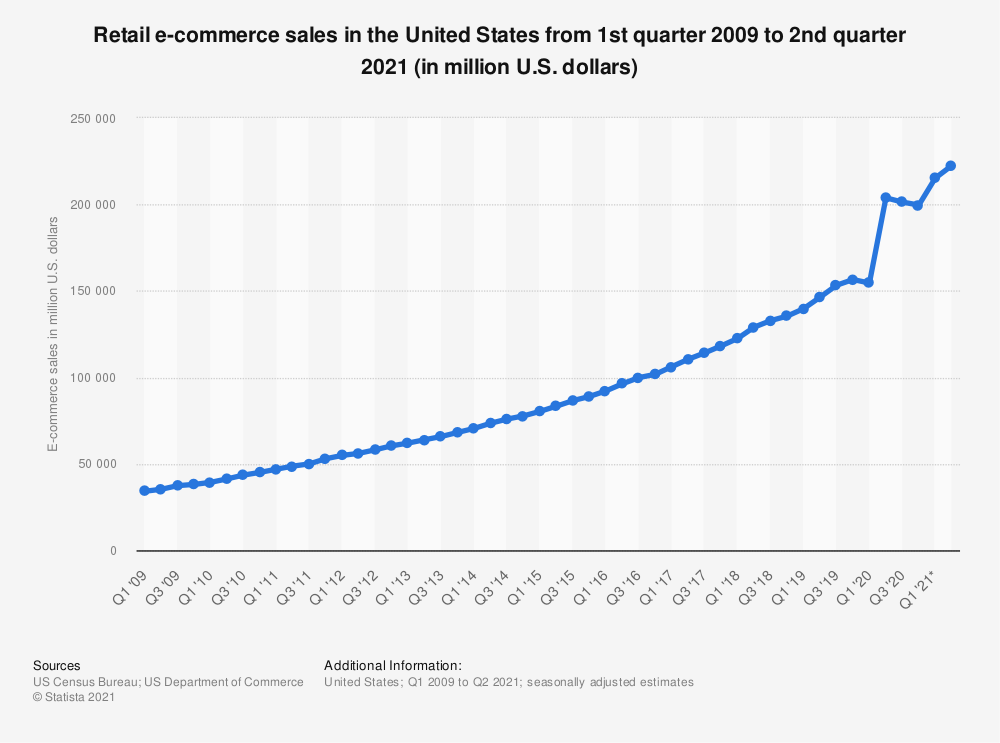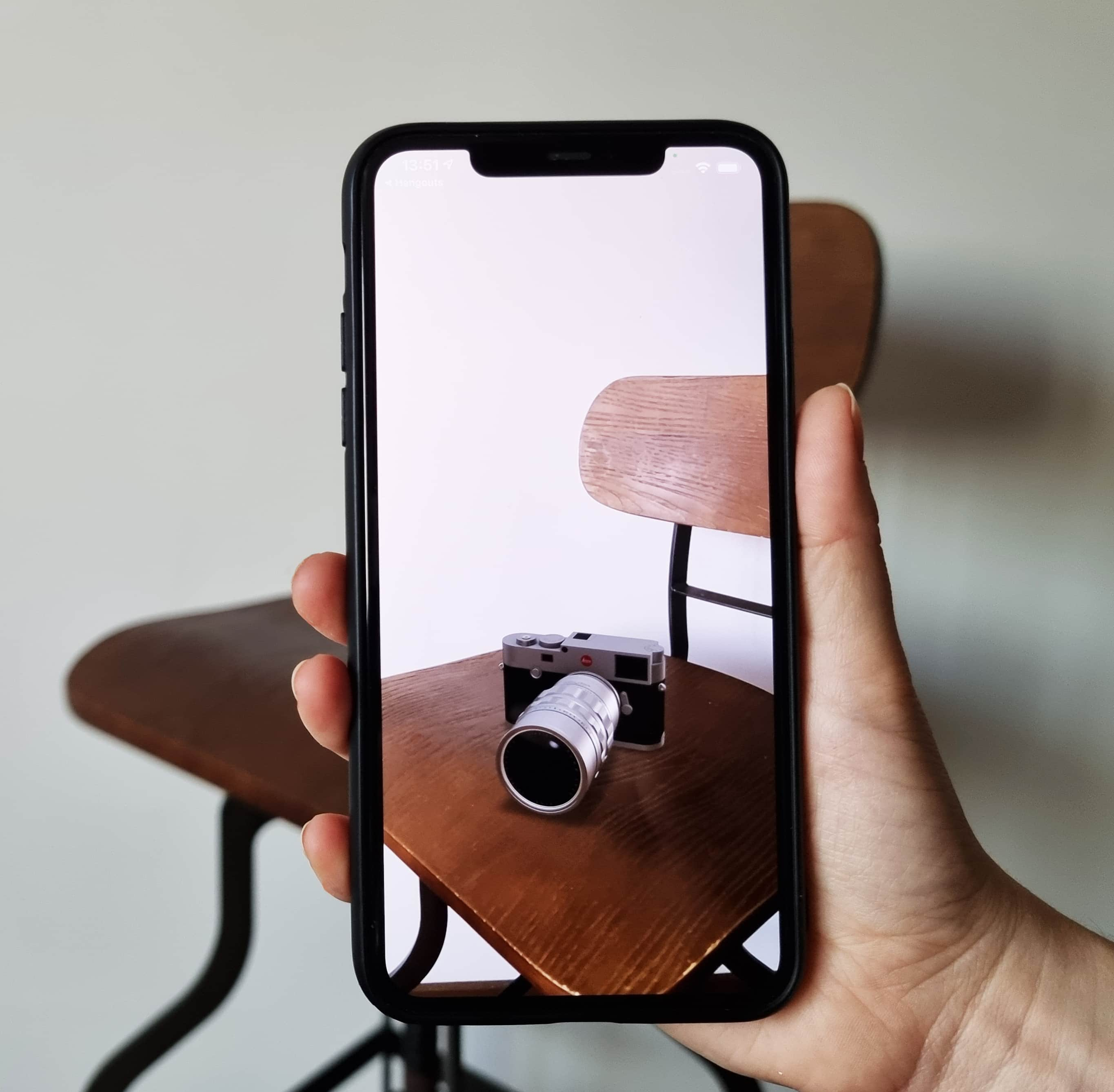Is your business ready for an Augmented Reality? Your customers are.
Pandemic-driven changes forever altered the customer journey.
Pandemic-driven changes forever altered the customer journey. The first moment of truth has now become your AR product experience.
In pre-pandemic times choosing a piece of furniture meant a trip to the store, where it was easy to see, touch, or physically compare products. After hours of decision-making, you brought it to your home, where you could see how it fits with the overall room and light. Often the furniture didn’t work in the home setting as well as it did in the artificially staged store.
The situation changed in 2020. Touching the product’s material, visiting showrooms, talking to knowledgeable staff in person became restricted. And as retail froze, online shopping has boomed. Comparing the US retail growth in Q2 2019 (10.8%) versus Q2 2020 (16.1%), it shows a sharp increase in sales compared to the gradual increase in previous periods.

Furthermore, behavioral lifestyle changes, such as remote meetings, contactless shopping, and local shopping, are likely to continue in some form as the “new normal,” according to Carat Trends 2021.

Create a contactless path to purchase. Make it just as easy to buy or experience the brand from home or away from stores.
Carat Trends, 2021
Increase your sales, lower the number of returns, and build your brand with AR
Augmented Reality (AR) on the web has emerged during the pandemic as the new first moment of truth, which is not going anywhere. In fact, pre-pandemic data suggests that customers have been long ready for AR solutions as opposed to what companies were able to deliver.
In 2019, almost half of global consumers under the age of 40 admitted to having used augmented reality (AR) technology to assist them with shopping in the past 12 months, resulting in 21% of Generation Z and 23% of Millennials trying this technology. Despite not yet using AR to assist them during the shopping process, 47% of both generations stated they would like to, given the opportunity.
Today customers browsing a site can see the product in 360 view in 3D or 3D product configurator and place it in real-size anywhere in their room with only one click. Business Wire claims that 61% of online shoppers prefer to make purchases on sites that offer AR technology.
AR not only reduces the number of returns but is also expected to make customers 70% more loyal to the brand, according to Invesp. The strength of a brand is even more critical in e-commerce during these times. It’s what stops the brand from becoming a commodity, and AR as a brand-building tool can help.
Depending on the industry, the market leaders are probably doing even better than before with online sales because of mental availability. Companies that were struggling before are probably finding the whole thing even more challenging.
Simon Peel, Senior Director - Global Media, Adidas, Source: WARC Marketer’s Toolkit 2021
A Vectary Case study: Vanmoof
In March 2020, when it wasn’t possible to visit showrooms, Vanmoof implemented the WebAR viewer by Vectary into their product pages to launch their new electro bikes. The result: 785 bikes sold in 10 days.
AR is not VR...
Augmented Reality (AR) is a reality we experience by merging the virtual and real-world. It uses an existing environment and overlays new information on top of it. In contrast, Virtual Reality (VR) creates artificial environments with a fully immersive experience.
Simply put, the technology required is generally a good indicator: for VR you would need a headset, while with AR, all you’d need is a mobile device with a camera.
The Best Kept Secret is available to everyone right now
The camera on everyone’s phone is becoming a go-to medium for the post-covid era. You might not be aware of this, but millions of people have a hidden feature in their smartphones - it’s an AR preview powered by Apple and Android. No extra app installation is needed because all iPhones and Androids support the AR experience natively. This technology is called a WebAR, and it can look like a 360 product viewer or configurator placed on the product website, link, or just a simple button that triggers the AR experience.
According to Statista, the number of mobile AR users globally is expected to reach 2.4 billion by 2023, fuelled in part by a growing desire for AR technology to enhance consumer experiences in media and entertainment.
A Vectary Case study: Hyundai
Hyundai exceeded their campaign KPIs, effectively doubling the expected Reach and Engagement figures. The activation campaign achieved these results, despite the second wave of the pandemic.
The rise of QR code
You might be wondering - what about desktop computers? Can the desktop users achieve the AR experience? The answer is a QR code. It is usually triggered on desktops after clicking on the View in space or AR preview button next to the product. Cameras on our smartphones support reading of QR codes natively. Just turn your camera on, and the link to the desktop image is automatically translated to your phone’s browser.
QR codes are becoming part of our everyday lives, from scanning contactless menus in the restaurant to paying an invoice. 28% of consumers in the US and UK have already used QR codes for payments. Research by MobileIron claims that 35% of consumers in the US and EU scanned a QR code in the past week. And now QR codes can trigger an AR experience as well. Imagine adding it to your printed catalogs or retails as well. It’s not only a cross-device but also an online-to-offline experience.
Try the AR experience now
When you click on the AR button on the desktop, a QR code pops up, and you can scan it with your smartphone camera:
The product in AR looks real:

How to adapt fast?
According to eMarketer.com, more than 20% of US retailers are expected to invest in AR or VR for their company’s online stores. The impact of the coronavirus pandemic created new incentives in the retailers’ budgets. Interest in AR/VR investment solutions almost tripled from the beginning of 2020 to June 2020, despite the general decrease in marketing spend.
You can significantly decrease the time required for implementation with Vectary - an end-to-end solution platform for businesses. Cover everything from AR content creation, 3D model optimization for AR, and share the final experience on the web as easy as YouTube video, without installing any software.
Find the right AR experience for your website today